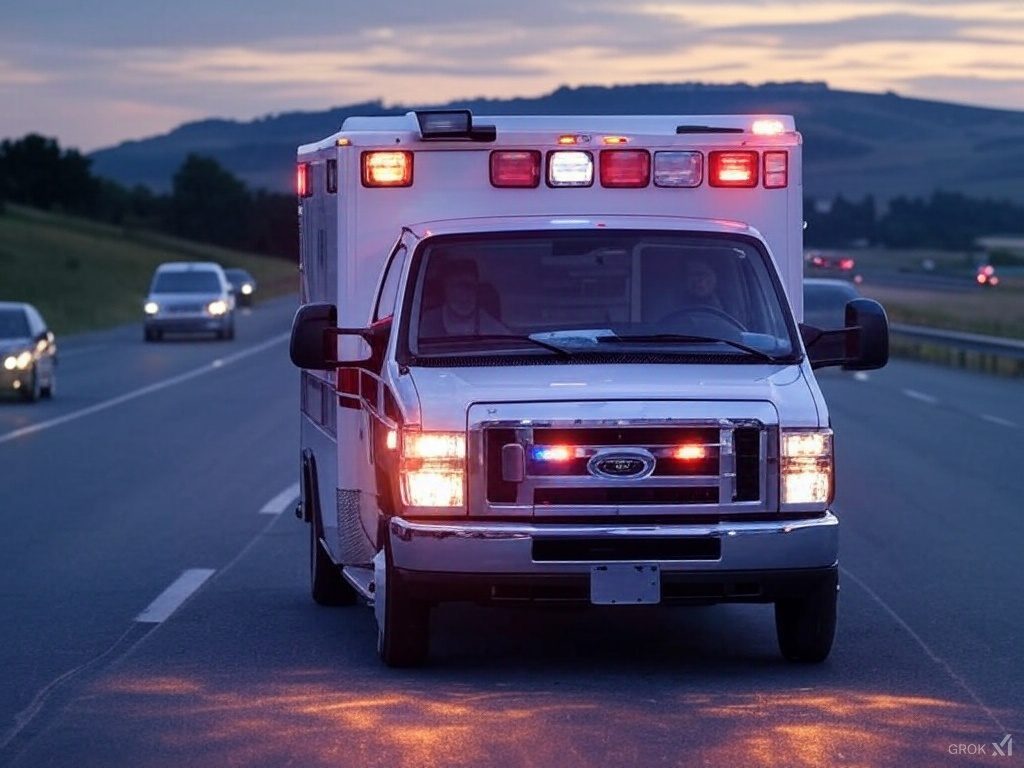Navigating the Road: A Driver’s Guide to Emergency Vehicle Safety
Brought to you by Traffic Safety Store – Your Partner in Road SafetyThe Golden Rule: Stay Calm and Pull Over
When sirens blare, some drivers panic—slamming on the brakes or swerving abruptly. This can cause sudden collisions and confusion on the road. Instead, follow these safe driving steps:- On highways: Use your turn signal, then move to the right-hand shoulder.
- On narrow streets: If no shoulder is available, find the nearest intersection or a wider section of the road for the emergency vehicle to pass.
- In heavy traffic: If there’s absolutely no way to pull over, reduce your speed significantly and create as much space as possible.

Situational Awareness Saves Lives
A 2023 AAA study revealed that 20% of drivers fail to notice emergency vehicles until it’s almost too late. Vigilance behind the wheel goes a long way toward preventing accidents and ensuring first responders get through quickly.- At red lights: Never inch into the intersection; you could inadvertently block the emergency vehicle’s path.
- When re-entering traffic: Ensure the emergency vehicle is fully past and the lane is clear before merging back.
Understanding “Move Over” Laws
Across the U.S., Canada, and the U.K., “Move Over” laws require drivers to change lanes or slow down when approaching a stopped emergency vehicle (such as an ambulance or police car). Compliance rates are improving, but not enough—many drivers remain unaware of these regulations or underestimate their importance. Potential penalties for non-compliance include:- U.S.: Fines up to $500 in certain states, along with possible points on your license.
- U.K.: Fines up to £2,500, reflecting the seriousness of the offense.
Tailgating an Emergency Vehicle: A Dangerous Mistake
It might be tempting to follow closely behind an emergency vehicle to “clear a path” through traffic, but doing so is both dangerous and illegal. Tailgating can cause serious rear-end collisions and distract emergency personnel who need to focus on the road ahead. Keep a minimum safe distance:- City streets: Stay at least 300 feet behind.
- Highways: Maintain a distance of 500 feet.
Seconds Matter: The Real-World Impact
Every second lost in an emergency could mean the difference between life and death. According to a 2021 American Heart Association study, each minute saved in ambulance response time improves cardiac arrest survival rates by 10%. Firefighters heading to a blaze and police responding to a crisis face similarly narrow windows of opportunity. By yielding without hesitation, you actively help first responders reach victims faster.Emergency Vehicle Encounters: Special Situations
Not all roads or situations fit neatly into a rulebook, so stay flexible and use good judgment:- Rural roads: If no shoulder is available, slow down significantly and signal to show you’re yielding. Emergency vehicles may move around you if there’s enough clearance.
- Urban gridlock: In congested areas where pulling over is nearly impossible, do your best to avoid blocking intersections or crucial points like fire hydrants.
- Police stops: If an emergency vehicle behind you is signaling you to pull over—rather than pass—comply immediately and find a safe spot to stop.
A Global Perspective
Emergency vehicle protocols vary worldwide, but the underlying principle remains the same: yield to first responders to save lives.- Germany: Drivers on the Autobahn must form a “Rettungsgasse” (rescue lane) in traffic jams, leaving a clear path in the middle.
- Japan: Ambulances often use loudspeakers to request priority, but drivers are legally required to pull over the moment they hear sirens.
Traffic Safety Equipment That Saves Lives
Yielding to emergency vehicles is crucial, but there’s more you can do to enhance road safety—especially if you’re involved in roadside work or face vehicle breakdowns. Road flares, warning triangles, high-visibility traffic cones, LED safety batons, and reflective safety vests are all key tools that make you visible to oncoming traffic and protect emergency responders. At Traffic Safety Store, we specialize in a full range of emergency and traffic safety equipment. Whether you’re a first responder, a city official, or a concerned motorist, you can find everything you need for safer roads and better compliance.
Take Action Today
Next time you see flashing lights or hear sirens, remember: slow down, pull right, stay alert, and let emergency vehicles pass. Share these tips with friends, family, and especially new drivers, who are statistically more likely to panic or react inappropriately in high-pressure moments. Following these guidelines not only keeps you safe and law-abiding, but also ensures first responders can reach emergencies faster—potentially saving lives in the process.
Want more road safety tips or traffic safety equipment to enhance road safety?
Visit the
Traffic Safety Store
today and learn how to make our roads safer.
Order your Traffic Cones Today! Call us at 800-429-9030.

Triangle Reflector Warning Kit
Easily deployed and stored, these florescent triangle emergency road flares are designed to meet or exceed all DOT and FMVSS 125 standards. Acrylic plastic strip reflectors have a permanent seal against dust and moisture damage. Ballasted, blow molded tube with non-slip foam pads provides a study base. Wire controlled tilting. Holds up to storms and extreme winds. Bright red carrying case with handle included.
Quick Facts:
- Meets DOT FMVSS 125 Standards
- Kit includes Three (3) Reflective Triangle in a Carrying Case
- Carrying case measures 18" Long x 5" Wide x 4 1/2" Tall and approx. 10 lbs.

Case (36) 30-Minute Road Flares
Case (36) 30-Minute Road Flares
Quick Facts:
- Case contains 36 Orion flares
- Waxed Flare w/Plastic Cap
- 30 Minute Burn Time - Non Perchlorate Formula
- Choose with or without Wire Stand

Please note:
Due to US Department of Transportation HAZMAT shipping restrictions, road flares are not returnable.

